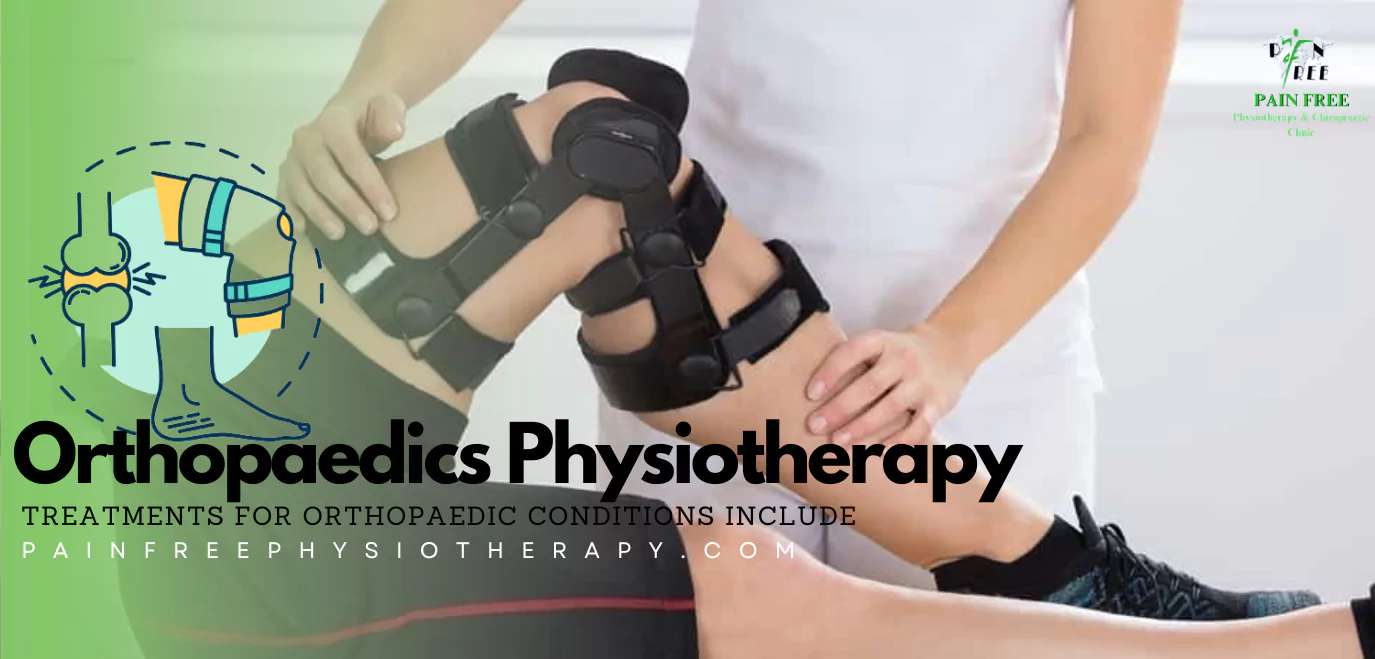Walking or moving should not feel painful. But when you have joint pain, stiffness, or old injuries, even small things become hard to do. It’s upsetting to live with pain and not find real help. If you are quietly looking for Orthopaedics Physiotherapy in Dwarka Delhi or a kind physiotherapist in Delhi who understands your problems, you are in the right place. We are nearby and ready to help you feel better with easy and effective physiotherapy in Dwarka.
What is Orthopaedics Physiotherapy?
The branch of physiotherapy which is concerned with the treatment of injuries or disorders of the skeletal system and associated muscles, joints, and ligaments is known as Orthopaedics physiotherapy. Orthopedics Physiotherapy is also concerned with pre and post-operative rehabilitations of skeletal, muscular, and other soft tissue surgeries.
Orthopedic Physiotherapy is a scientific approach to treat a condition achieving near-normal levels of function, movement, and biomechanical corrections following Evidence-Based Guidelines. As a clinical orthopaedic physiotherapist, one has to carry out a detailed assessment and design treatment aims and goals over a short and long-term period to achieve while carrying out the treatment.
Orthopaedics Physiotherapy Treatment
It is important to get to the source of the problem and prevent a re-occurrence. The treatment goal of the orthopedic physiotherapist is to provide pain relief, increase joint range, improve strength and flexibility and restore the patient to full function (near normal achievable functional state).
Common Orthopaedic problems that are treated by a clinic physiotherapist include (if a patient undergoes immobilization or surgery for any of these conditions, pre-and post-operative physiotherapy should be considered in all such cases) –
- Ligament sprains/ tear
- Fractures
- Tendonitis/ tendinosis
- Bursitis
- Arthritis
- Osteoporosis
- Ankylosing Spondylitis
- Scoliosis/ kyphosis
- Spondylolisthesis
- Spondylitis/ spondylosis
Pre-operative physiotherapy helps maintain aerobic conditioning and strengthen a patient physically. Physiotherapy helps maintain and improve range of movement and strength prior to surgery and educates the patient on their post-operative rehabilitation program. This will facilitate the patient to recover from surgery at a faster rate. Following orthopedic surgery, physiotherapists should work in close association with the surgeon to follow the recommended clinical protocol.
Physiotherapy Treatments for Orthopaedic conditions can include the following:
- Manual therapy: This is a carefully graded system of moving the joints to reduce pain and restore normal mobility of the joints. It includes mobilization, manipulation, and other related techniques.
- Massage therapy –Techniques/ soft tissue mobilization techniques: it varies from relaxing light pressure massage to deep friction massage to break down scar tissue in muscle or ligaments.
- Ultrasound Therapy: An electrical machine that produces ultrasonic waves that get transmitted into the affected area using conducting gel. This in turn causes a micro-massage effect that promotes circulation, reduces pain and increases regenerative powers of tissues, and helps muscle relaxation. It is very helpful in the treatment of soft tissue injuries.
- Interferential Therapy: This is an electrical current delivered to the injured part via 2 or 4 electrodes. It sends two interfering currents into the body part which feels to the patient like pins and needles. It can be used to relieve pain, reduce swelling and optimize the healing process.
- Neuro-Muscular Stimulation: An electrical machine with variable currents which is applied using electrodes to strengthen very weak muscles. This is very useful in nerve-related issues like bell’s palsy, or weakened muscles to regain strength
- Dry-needling: This is a western medical technique and involves the insertion of fine needles into dysfunctional muscles. Dry needling works by changing the way body feels pain and by helping the body heal trigger points. Myofascial trigger points are tender nodules within taut bands of muscle.
- Taping for joint support/alignment: This will ease pain and facilitate normal movement.
Program of Rehabilitation Exercises:
Home Exercises are scientifically designed to help posture, improve the mobility of the spine and joints, stabilize and strengthen the muscles that support the bones. This will be tailor-made and graded so that the patient will reach full recovery. This is a critical part of returning to full health.
- Apart from these, there are several modalities and enumerable ways and techniques to treat in physiotherapy.
The earlier injuries or disorders are addressed the quicker the recovery will take place. We have a wide range of treatment methods used to alleviate pain and help recovery. If you have any issues that need to be addressed by a Physiotherapist, contact us.






